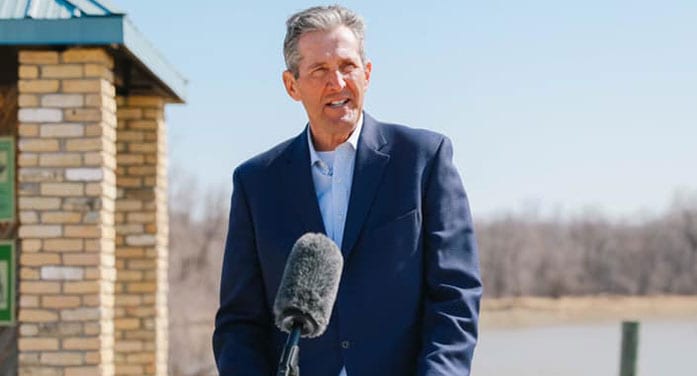 Around 1915, Winnipeg was frequently described as a second Chicago, a serious transportation hub with a bustling private economy.
Around 1915, Winnipeg was frequently described as a second Chicago, a serious transportation hub with a bustling private economy.
In 1921, it was the third-largest city in Canada. In the 1960s, Winnipeg was Western Canada’s corporate headquarters city.
Today, Winnipeg is Canada’s ninth-largest city, known more in the United States, if not by most Canadians, for the Winnipeg Jets of the National Hockey League.
Meanwhile, senior management roles at major Winnipeg-based corporations continue to shift to Ontario.
From a population, economic and political perspective, Manitoba’s weight is in the same category as the Maritimes and Newfoundland and Labrador.
Manitoba has never been the home of a Canadian prime minister. At federal election time, the focus is on seat-rich Ontario and Quebec, certainly not on Manitoba’s 14 ridings. As to deliberations on heavy economic issues, both the federal governing party and the opposition focus on Ontario and Quebec. Even Manitoba’s more affluent western neighbours get more attention in Ottawa.
Manitoba’s provincial government depends on long-calcified federal transfer programs to fund an astounding 37 per cent of its budget.
The federal government’s finances, in turn, depend disproportionately on tax revenues from a few rich provinces to help fund the essential public services of the other poorer provinces through its dysfunctional and increasingly divisive 64-year-old equalization program.
This was less of a problem when the federal government was relatively flush and had small overall federal deficits. Much research shows that inter-governmental transfers tend to stick to the public sectors in recipient provinces – have-nots have significantly larger government sectors per capita than have provinces like Ontario, B.C., Alberta and Saskatchewan.
Manitoba’s weight in the federation continues to decline – with about four per cent of Canada’s population, its share of the total economy has fallen to 3.2 per cent.
By choosing to fight COVID-19 by locking down the economy, the federal government increased its borrowings by an astounding half a trillion dollars, falling back on the Bank of Canada’s printing press. In this new reality, Manitoba finds itself leaning on a wounded bison – the federal government.
Let’s not be naïve; Canada’s transfer programs will likely be sideswiped by the Liberal government’s fiscal COVID bonfire.
It will also be aggravated by foolish anti-energy federal climate policies that are suffocating the country’s largest source of tax and export revenue. In particular, blocking pipelines to highly-priced Asian markets forces Canadian producers to be a price-taker in the U.S. market – depressing prices to industry and tax revenue to government.
Especially egregious is Quebec’s blockage of the Energy East pipeline, which would see domestic oil from Western Canada displace expensive imports from Saudi Arabia.
Quebec receives about half of the equalization pie, benefiting unfairly from a loophole in the equalization formula that exempts its electricity exports. This jiggery-pokery will figure in Alberta’s upcoming equalization referendum, which could be a prelude to a sharply accelerated discussion around western separation.
With its 1970s-era model of big government and high taxes, Manitoba is heading for an overall $60-billion debt (including Manitoba Hydro). It’s totally unprepared for coming higher-level national fiscal and political storms.
This time, the federal government, facing its own fiscal chaos, is in little position to help.
Newfoundland and Labrador isn’t the only Canadian province that needs another economic model.
Graham Lane, a retired CPA CA, is a member of the Frontier Centre for Public Policy’s expert advisory panel.
Graham is a Troy Media Thought Leader. For interview requests, click here.
The views, opinions and positions expressed by columnists and contributors are the authors’ alone. They do not inherently or expressly reflect the views, opinions and/or positions of our publication.
© Troy Media
Troy Media is an editorial content provider to media outlets and its own hosted community news outlets across Canada.



